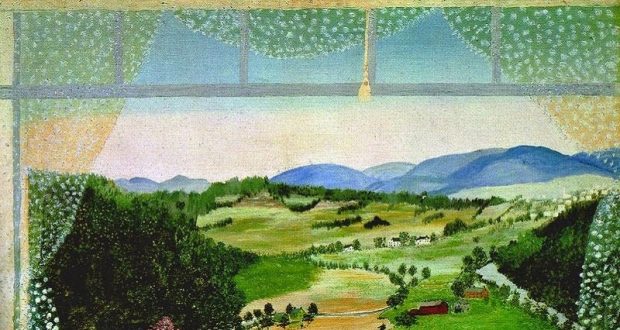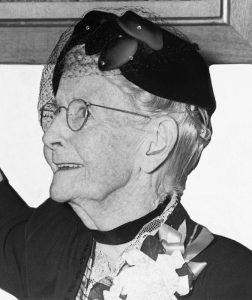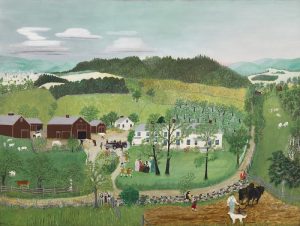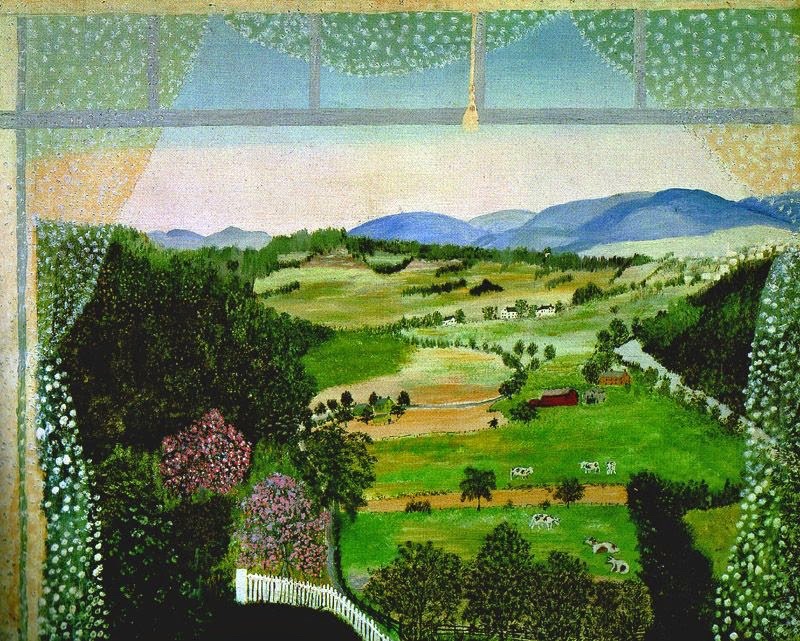Uninfluenced by movements or academic theories, Folk Art surrounds us everywhere that we go. Historically, this type of artwork can be defined as utilitarian or decorative in nature as opposed to being purely aesthetic. Produced by the artistically inclined individuals of every culture on earth, folk art directly reflects the values of a society. For instance, the decorated (useful) pottery of any ancient civilization affords us valuable clues about its common people. The art of ordinary folk helps to express a cultural identity by conveying shared community values.
Folk artists are generally self-taught or learn their skills through some type of informal apprenticeship. Often, they possess an inherent talent which emanates unstoppably from within, bouncing back and forth between different media as a means of expressing themselves. Also known as Naïve or Primitive, these artists are not concerned with the academic intricacies associated with fine art. Instead, they are inclined to work with whatever is readily available, and are driven to accomplish whatever they start out to do.
The seventeen interconnected Watts Towers in Los Angeles built by Simon Rodia, 1875-1965, are a good example of this syndrome. Rodia’s towers, built between 1921 and 1954, became a National Historical Landmark in 1990.
On a much gentler note, there was a lady named Anna Mary Robertson Moses, 1860-1961, who was also a renowned American folk artist. She is known the world over as “Grandma Moses” because she began her successful art career well into her seventies. One of the best known “primitive” painters of modern times, she became famous for her whimsical scenes of rural farm life. Stricken with arthritis after having worked on a farm her whole life she was forced to abandon embroidery.
As a result of this setback she began painting in the 1930s shortly after the death of her husband. At first, she only showed her paintings (and preserves) at the local county fair, or she gave them away as thank you gifts to friends and family. As fate would have it, in 1938 she was coaxed into putting a group of works on display in the local drugstore window. A short time later an art collector named Louis Caldor happened to be passing through Hoosick Falls, New York. He noticed Moses’ paintings, bought them all, and the rest became important cultural history.
In 1939 art dealer Otto Kallir, who was a friend of Louis Caldor, exhibited some of Moses’ work in his New York gallery. There, she was given a solo exhibition called, “What a Farm Wife Painted,” which dazzled the art world in this country. Soon collectors from all over the world were interested in her paintings, which were becoming highly sought after. Living to the age of 101, she was able to see her work reproduced countless times in advertising and for many special causes.
Ever the thrifty housewife, she was always amazed at what people were willing to pay for her originals. In 1969 her work was honored by the issuance of a United States six cent postage stamp, now a collector’s item. In November 2006, her painting titled “Sugaring Off,” became the highest selling Grandma Moses work to date at $1.2 million. Toward the end of her long life she was quoted as saying, “I look back on my life as a good day’s work; it was done, and I am satisfied with it.”
The Smithsonian’s American Art Museum in Washington DC, currently houses the work of over seventy past and present folk artists. If you’re ever in New York be sure to visit the American Folk Art Museum, which is the leading center for the study and enjoyment of this special type of art.
Closer to home, you need only to visit a good crafts fair to see some current local folk art.








